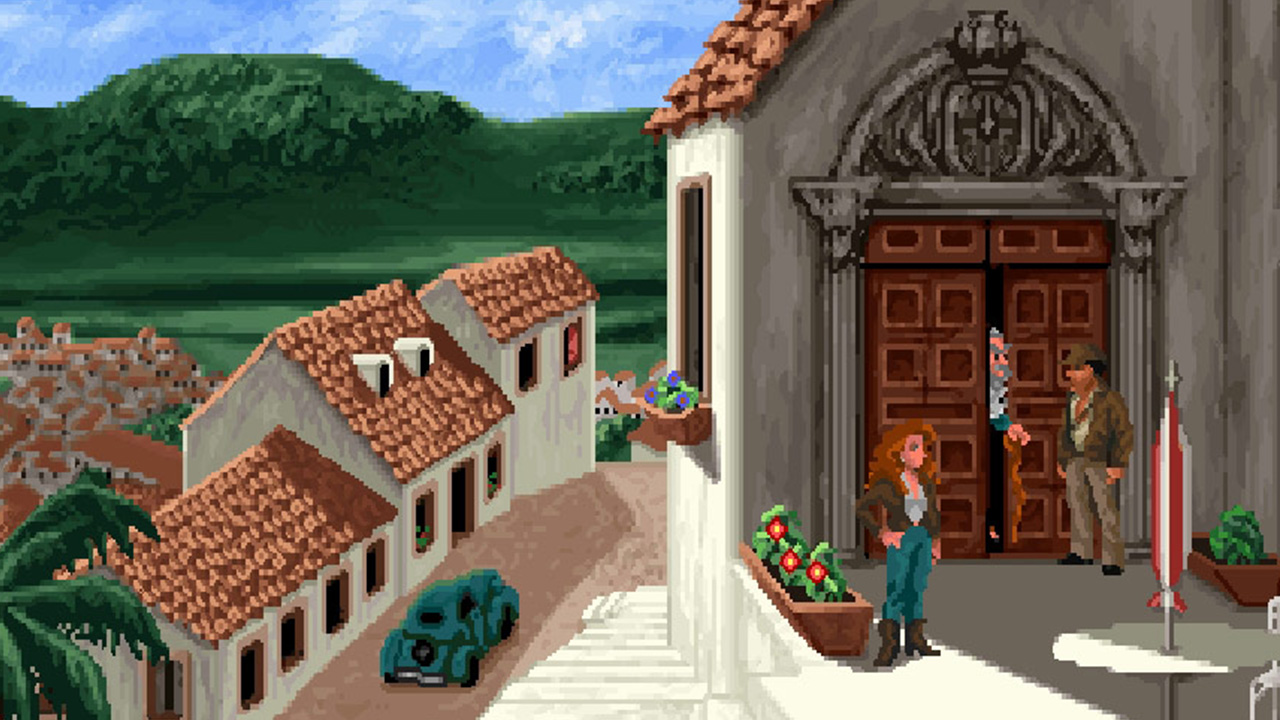
(Image credit: LucasArts)
Hal Barwood: a true Renaissance man. Kicking off his career as a Hollywood scriptwriter, he contributed to classics like The Sugarland Express and Close Encounters Of The Third Kind. Notably, the alien landing location, Devils Tower, was his idea, which earned him a cameo as a pilot in the film. While producing Dragonslayer for Disney, a cult favorite emerged. Balancing movies and gaming, Hal developed a few iconic games for LucasArts, featuring the beloved ‘Man in the Hat’.
An old friend of George Lucas, they met at film school, and Hal’s gaming interest drew him to Lucasfilm Games early in the Eighties. There, he befriended Steve Arnold, and joined forces with legendary designers like David Fox, Ron Gilbert, and Noah Falstein. Together, they crafted the first-ever Lucasfilm licensed hit, Indiana Jones And The Last Crusade. As the team diverged post-Last Crusade, Hal stepped in to lead an Indiana Jones sequel.
Hal’s proven scriptwriting prowess flavored his work on what would become The Fate of Atlantis. Described as the greatest Indiana Jones computer game, this title is often celebrated as one of LucasArts’ finest graphic adventures. The storyline, set against the exciting race with the Nazis to uncover Atlantis’s mysteries, intertwined with the charming yet frustrating spiritualist, Sophia Hapgood, created a spellbinding narrative.
Initially, the sequel sought inspiration from an unproduced Indy script by Chris Columbus but was dismissed for lacking merit. Instead, Hal and Noah explored George’s expansive library, unearthing a depiction of Atlantis that screamed for adaptation into a game. The Atlantean mythology, fused with elements like orichalcum, an exotic alloy, served as both the game’s foundation and conflict element with Nazi enemies.
An intriguing twist allowed players to choose from three unique paths: Team, Fists, and Wits. Crafted with overlapping narratives, each path offered distinctive experiences. While challenges appeared along the way, Hal and his team managed to craft a coherent, thrilling adventure.
As the last pixel-painted project at LucasArts, Fate of Atlantis marked an end of an era. Strong visual elements and settings stretched across numerous sites worldwide provided players with an ambitiously massive adventure. Introducing features like rotoscoped animation, the game forever impacted how future titles were crafted.
Following Fate of Atlantis, Hal spearheaded other projects like Indiana Jones And His Desktop Adventures and Indiana Jones And The Infernal Machine before leading a consultancy under Finite Arts. A collaboration with Noah Falstein for Anaconda Games produced a new venture: Mata Hari, reimagining the legendary Dutch spy’s life into a new gaming experience. While not anticipated to match Fate’s grandeur, Hal’s mastery and enthusiasm promise to revitalize the much-loved adventure genre.